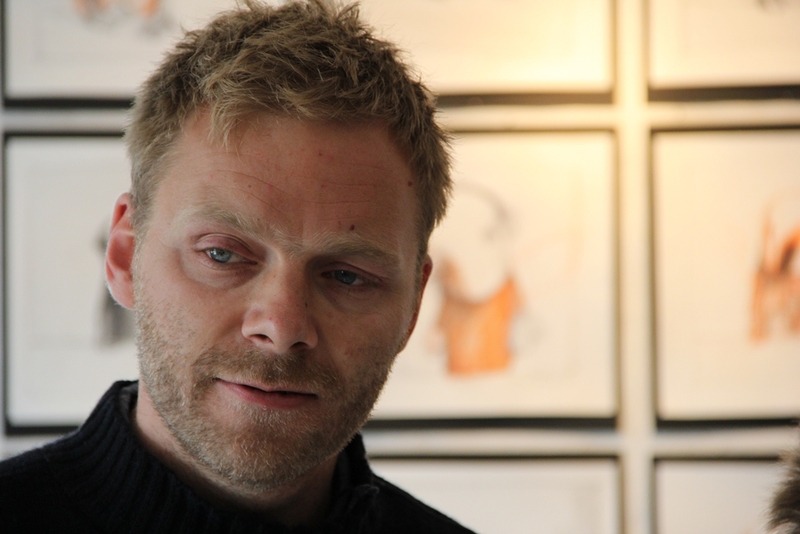Bárður Oskarsson

The picture book Flata kaninin (The Flat Rabbit) by artist and children's author Bárður Oskarsson (born 1972) is about ethics and responsibility in a sensitive and compelling way. The subject of the book is akin to Antigone and The Iliad and the challenge is to take care of the dead body of a loved one, even though there is great risk involved.
Oskarsson’s books have animals as people. They have important human traits, they talk and the four-legged walk on their hind legs, but on the other hand they do not wear clothes. They often live in human surroundings, for example, in a town, but there are no people there except indirectly as the reason for actions with dramatic consequences.
In Flata kaninin (The Flat Rabbit) there are human actions which precede and determine the plot: a dog and a rat meet on a pavement in town and see a rabbit lying completely flat on the road. One assumes that it has been run over by a car even though nothing is said about it. The dog and the rat think it's a shame for the rabbit to be so flat and wonder what they should do; the possibility of approaching the rabbit's people is thrown out as the chances are that they will be accused of being messengers. Then the dog gets an idea. Gently, so it doesn't fall apart, they take the rabbit home to the dog. All night the noise of hammering can be heard from the dog's house and by the morning they have finished putting together a kite. They attach the rabbit to the crossed pieces of wood on the underside of the kite, and after many attempts they manage to get the kite with the rabbit to fly. At the end the dog and the rat think about what it is like for the rabbit flying up there on high.
The dog and the rat react with stoic empathy to the rabbit's fate, free it from the humiliating exposure and restore its dignity. The dog with its thin legs, a huge head and wet nose is the thoughtful and sensitive protagonist, while the rat is its little ally.
The style is minimalistic in both text and pictures which complement each other and together ensure the story's complexity. For example, there is no mention of a car, but looking at pages 13-14 you will see a little grey car on the left, while on the right there is a full page picture of the flat rabbit which the dog and the rat are observing from the pavement. In contrast, if you look at pages 30-31 you will see a red car on the left - a danger signal? - while the right-hand page shows the dog flying the kite with the rat looking on. Oskarsson uses water colours, and the predominantly transparent, very light nuances in Flata kaninin (The Flat Rabbit) have a softening effect on the unsentimental naked illustrations.
In literature, animal figures represent people, and small animals represent children. Reading Flata kaninin (The Flat Rabbit) in this way is a powerful story about our time's so-called competent children, a term that refers to children who have acquired skills that otherwise used to be reserved for adults. But it is also one of the best examples of a children's book for all ages.